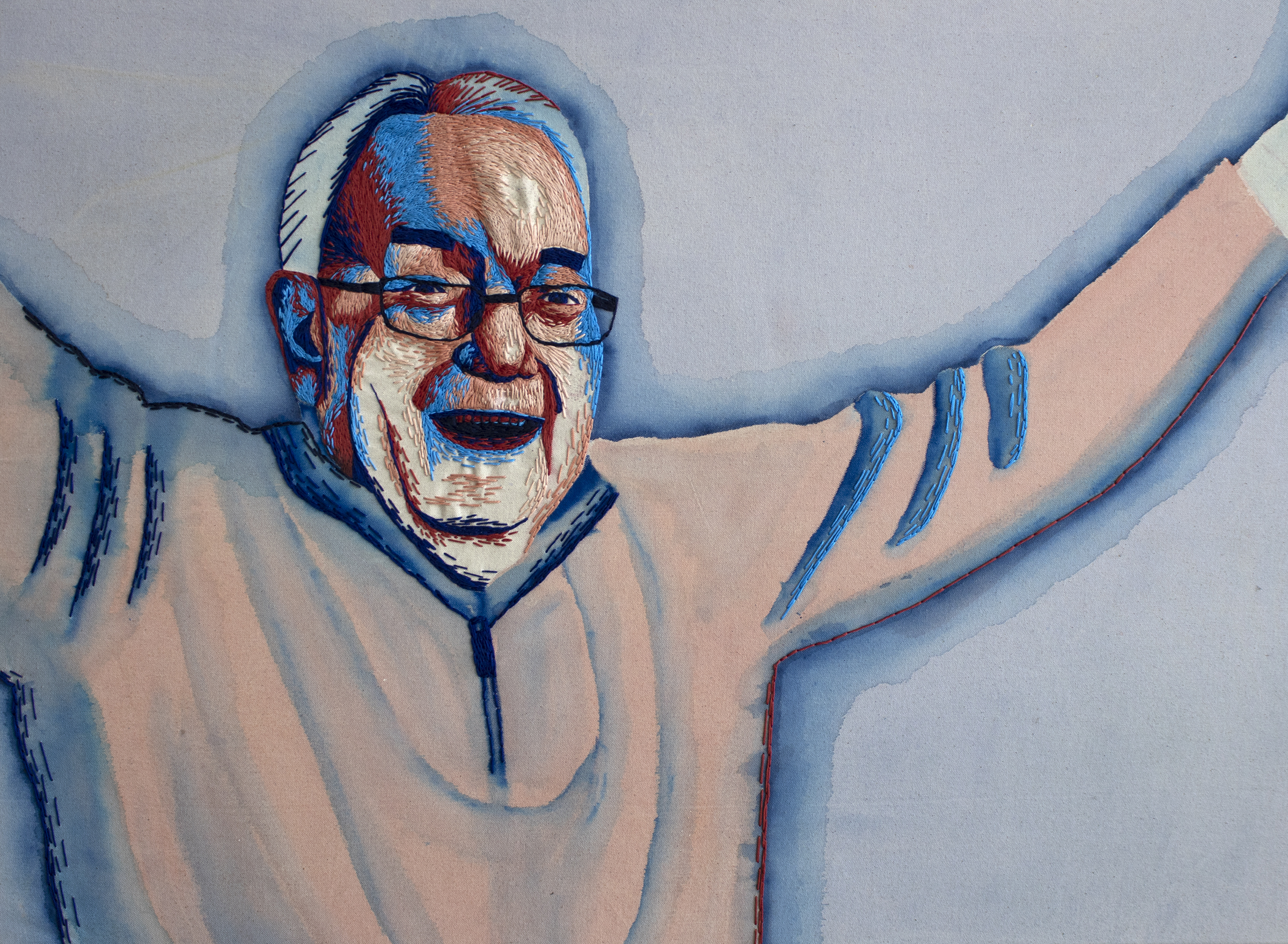Artist Biography
Since I was a child, my creativity has always given me a way to express myself and communicate my internal experiences to others. Through painting, drawing, building sculptures out of paper, and sewing I explored a variety of media while also investigating who I was as a person. As a quiet child, my artistic explorations gave me a way to share my internal experiences without having to explain them. Throughout my journey in the world of visual art, my work has given me a voice to show others how I see the world. For this current work Connecting Threads, I focused on the theme of nonverbal communication and used embroidered art to portray social relationships between myself and the model in the portrait. Using my artwork as a form of nonverbal communication, I examined how my own representation of individuals close to me could foster a deeper connection and even develop empathy between myself and my models.
Connecting Threads consists of three portraits created in free-hand embroidery and watercolor paint. First taking raw Muslin fabric and dyeing the base with watercolor, hand stitched portraits were created in expressive color. In the creation of each image, I carefully studied the nonverbal communication cues of each individual such as their body language, gestures, and facial expressions. My aim was to cultivate an image that truly represented who that person was to me, and ultimately to deepen the connection I had to each individual by learning more about them through the process of creating my artwork.
Thesis Abstract
This thesis investigates the role of visual art as a nonverbal method for fostering human connection and empathy. Nonverbal communication cues such as body language, gesture, and facial expression augment the understanding of spoken language. Nonverbal communication enhances the understanding of spoken language, and can even provide pathways to the development of human connection and empathy between individuals. Using watercolor paint, and embroidery thread, portraits were embroidered onto raw muslin fabric using a tabletop scroll frame embroidery loom as well as 12 inch embroidery hoops. The resulting series titled Connecting Threads included three embroidery and watercolor portraits in expressive color. The final portraits were of models with close personal relationships to the researcher. Future directions, limitations, and conclusions will discuss the role of embroidered artwork as an art therapy method for non-verbal communication and empathetic connection.

